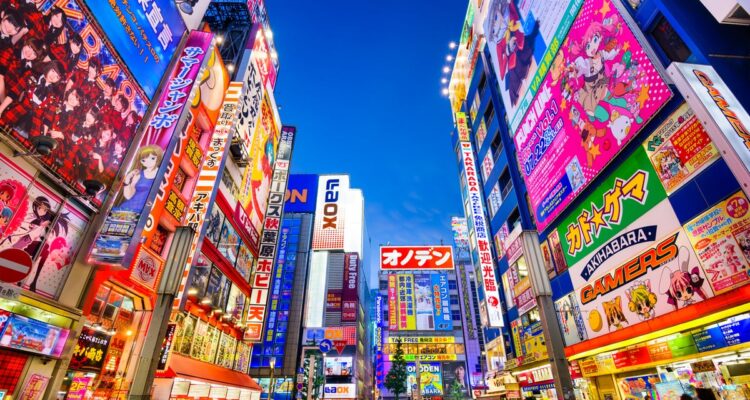Tokyo is a confusing contradiction in so many ways, with a kaleidoscope of personas — it’s unbelievably clean, like, spotless; it blends modern with traditional, quirky and kitsch with formal, and a degree of chaos with rigid politeness and civility.
Japan’s capital is busy and buzzing, and it can be a total culture shock for a first-time visitor from the west. As Scarlett Johansson’s character proved in Sophia Coppola’s 2003 rom-com “Lost in Translation,” tourists can feel alienated, culturally displaced, and disconnected because Tokyo can seem so damn alien.
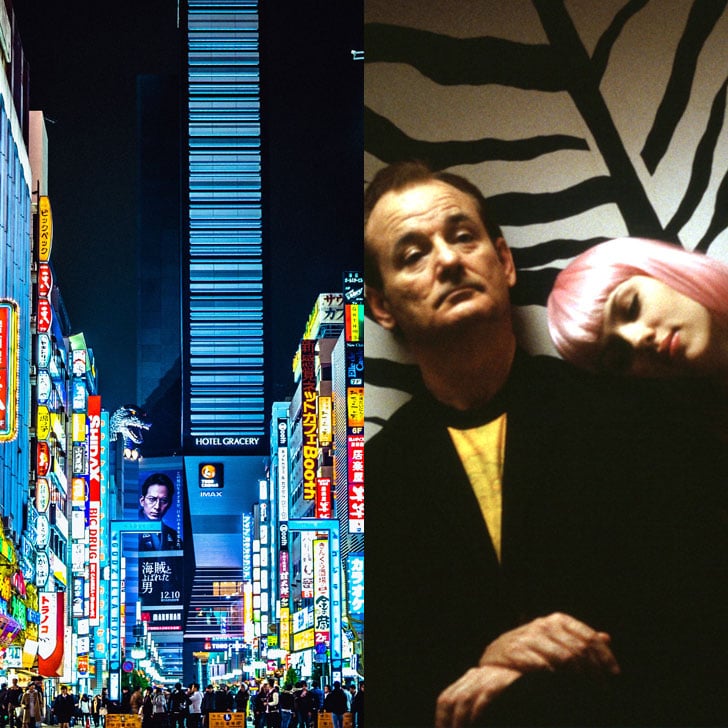
But then, Scarlett Johansson’s character also spent an excessive amount of time hanging out at the bar of the Park Hyatt hotel hoping to cop off with a miserable and morose, unhappily married Bill Murray all while he was in the full throes of a tragic mid-life crisis. So, well, take that as you will.
Tokyo has soooo much more to offer than wasting time trying to seduce fading Hollywood actors — especially ones who starred in “Garfield — The Movie.” So, step away from the overpriced martini, lace up your walking boots, hit the streets, soak up the culture, and people-watch until your eyeballs ache.
Get lost in Tokyo with our insider guide to Japan’s quirky and kitsch capital.
Cafe cray cray
Japan really knows how to do bizarre and cray, especially when it comes to its myriad of “uniquely” themed cafes and restaurants.
Tokyo, which was called “Edo” up until 1868 when the emperor rolled into town and promptly renamed the city, is filled to the brim with extraordinary eateries such as goat, hedgehog, cat, reptile, and owl cafes where you can pet and chow down with real-life critters.
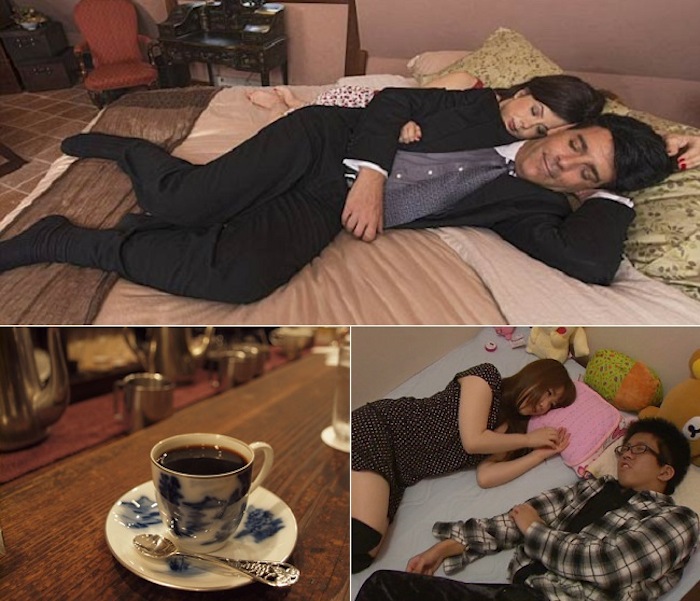
There are the robot and Super Mario themed diners; Soineya (Tokyo’s first cuddle cafe) where lonely male patrons can pay to lay down with a chick and chillax over a glass of popping boba tapioca; Maidreamin where you’re served by waitresses clad in (borderline creepy) cosplay maid outfits; vampire, ninja, fishing, ghost, and Alice in Wonderland restaurants…the list is endless.

A worthy mention is the Lock-Up restaurant, where you have to place your hand in a mini guillotine and receive an electric shock before you can enter. It doesn’t get much better from then on in, as you’re handcuffed, escorted by cops to a dark, dank cell, and served food by an appropriately stern and sullen prison guard. Oh, and in case that’s not enough of an experience for you on its own, there are also three total blackouts every night for a special show during which “hideous monsters roam through the dark hallway and even open the prison cell doors and enter the cells.”
Continuing with the prison theme, but on steroids, there’s the Alcatraz ER restaurant, your good old regular penitentiary mixed with a mental ward for the criminally insane. Relax behind prison bars, encased in a dirty, dilapidated, and graffiti-covered rusty steel interior, as you’re served cocktails in syringes by seemingly unhinged “doctors and nurses.”
Definitely, a night out that the whole family can enjoy!
Temple time
Japan boasts over 77,000 temples, and Tokyo is home to nearly 3,000 of them, in addition to a shed load of totally bonkers bars, and cafes. However, chances are that unless you’re a certifiable temple fanatic, you’ll only want to visit one or two while you’re in town, so go for gold.

Sensoji Temple, located in Asakusa, is the most iconic and picturesque of them all, with the imposing and gigantic Kaminarimon [Thunder] Gate guarding its many treasures.
Much of the Buddhist temple’s original outside structure was destroyed during the Second World War, but it’s been faithfully rebuilt and restored to its original form. Sensoji’s main hall, a spectacular and colorful 5-story pagoda, was constructed in 645, making it Tokyo’s oldest temple.

Another must-see is the opulent and majestic Meiji Shinto Shrine, which was built in 1920, combining traditional Japanese architecture with a love of nature. The shrine was constructed to honor the deified spirits of Emperor Meiji and his consort, Empress Shoken. The sanctuary is surrounded by a tranquil and beautiful forest, which provides an oasis of calm and a rare opportunity for a relaxing stroll away from the 24-7 hustle and bustle of Tokyo’s city streets.
Shop till you drop
To find everything your heart desires, and a whole ton of stuff you never even knew existed, let alone wanted, head to Akihabara Electric Town (or Akiba for short) to splash the cash. Go prepared, with a fist full of yens, and an empty suitcase or two to haul away your newly acquired booty.

Akiba offers up the mother-load of shop opps, with a sprawling market selling manga, video games, designer knock-offs, all kinds of clothing from bizarre to everyday attire, music from emerging artists and pirate CDs and DVDs, anime, adult “toys” that’ll make your eyes water, books, and run-of-the-mill electronics in addition to slightly scary “up-and-coming” test inventions (perfect for any reckless thrill-seekers who value emerging tech over possible electrocution.)
Even if you’re on a tight budget — after all, Tokyo is the third most expensive city in the world, behind, bizarrely, Ashgabat, the capital of Turkmenistan, and Hong Kong — it’s still worth visiting Akiba, if for no other reason than to gawk at the towering neon lights and humungous flashing billboards that dominate the area, turning it into a kind of psychedelic Times Square as night falls.
If you value clinquant and camp over possible death by electrocution, then make your way over to the oldy-worldly streets of Yanaka, and stop in at the appropriately named Tokyo Kitsch.

The store is home to every gimmicky and twee souvenir you can think of — Maneki-Neko lucky cat figurines? Check! But, it also stocks an array of local artisan hand-crafted ornaments, jewelry and accessories, very Japanese and exceedingly cute stationery, kitchen utensils and housewares, and, of course, more chopsticks than you could shake a, well, chopstick at.
Teen spotting
Harajuku evolved into Japan’s youth fashion and teen culture epicenter back in the early ‘80s, decades before Gwen Stefani began culturally appropriating it via her clothing line and perfume range.
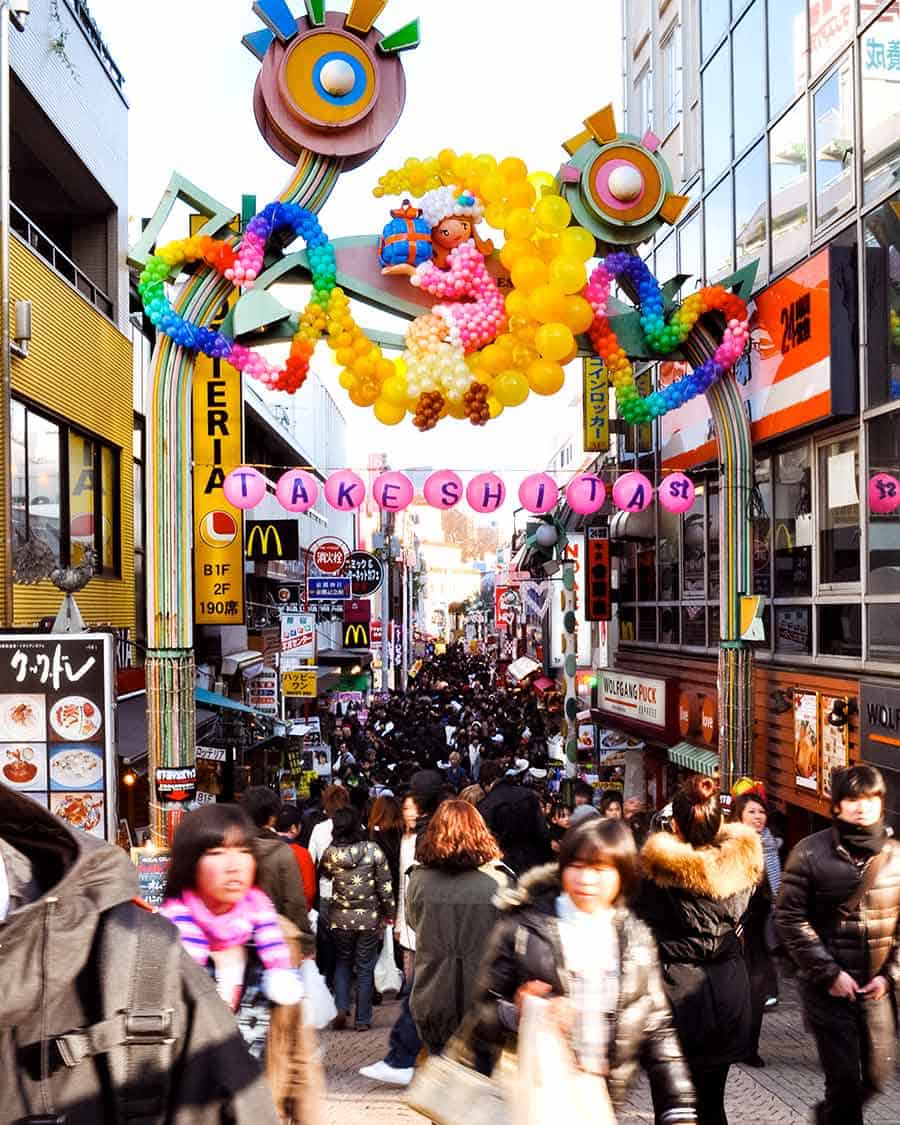
The area is famed for its vibrant street art, trendy vintage clothing stores, quirky cosplay shops, and hordes of teens parading up and down Takeshita Dori Street in gloriously unique and bizarre outfits, including styles such as Gothic Lolita, Cutesy Fairy Kei, Sweet Lolita, Decora, and Gyaru.
Harajuku isn’t just teen hormone overload however, the area is also home to a bunch of cool little restaurants, bars, cafes and street food carts, Yoyogi Park, and the Watari Museum of Contemporary Art.

The Emperor’s Castle
Naruhito is Japan’s current Emperor, acceding to the Chrysanthemum Throne in 2019, following the abdication of his father, Emperor Emeritus Akihito.
These days, being an Emperor isn’t all glitz and glamor, you have to actually put some work in to ensure popularity amongst your subjects, but there are more than a few plus sides, like getting to live in a sweet, sweet pad in the very heart of Tokyo.
Japanese real estate sells and rents at a premium, to say the least, so the vast majority of Tokyoites (78 percent according to government statistics) have to make do with cramming their entire family into less than 318 sq feet of living space.
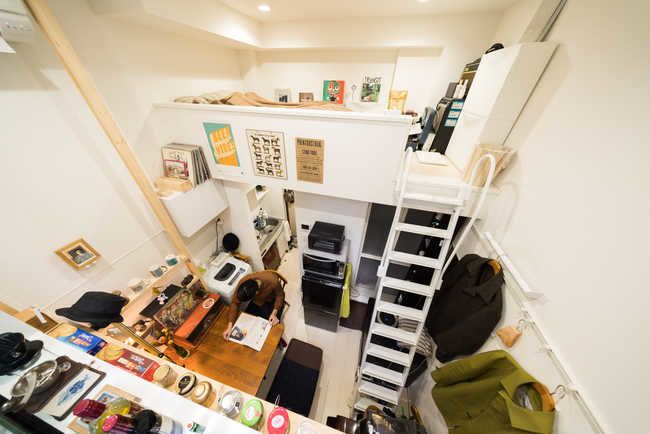
However, Naruhito’s Empireship affords him the luxury of kicking back in the Imperial Palace, a 13,500 sq foot castle, nestled in a sprawling park that occupies a staggering amount of land, right in the heart of the metropolis.
The palace is the imperial family’s main residence, so it only opens its doors to visitors twice a year, on January 2 for the New Year’s Greeting and December 23 for the Emperor’s Birthday.
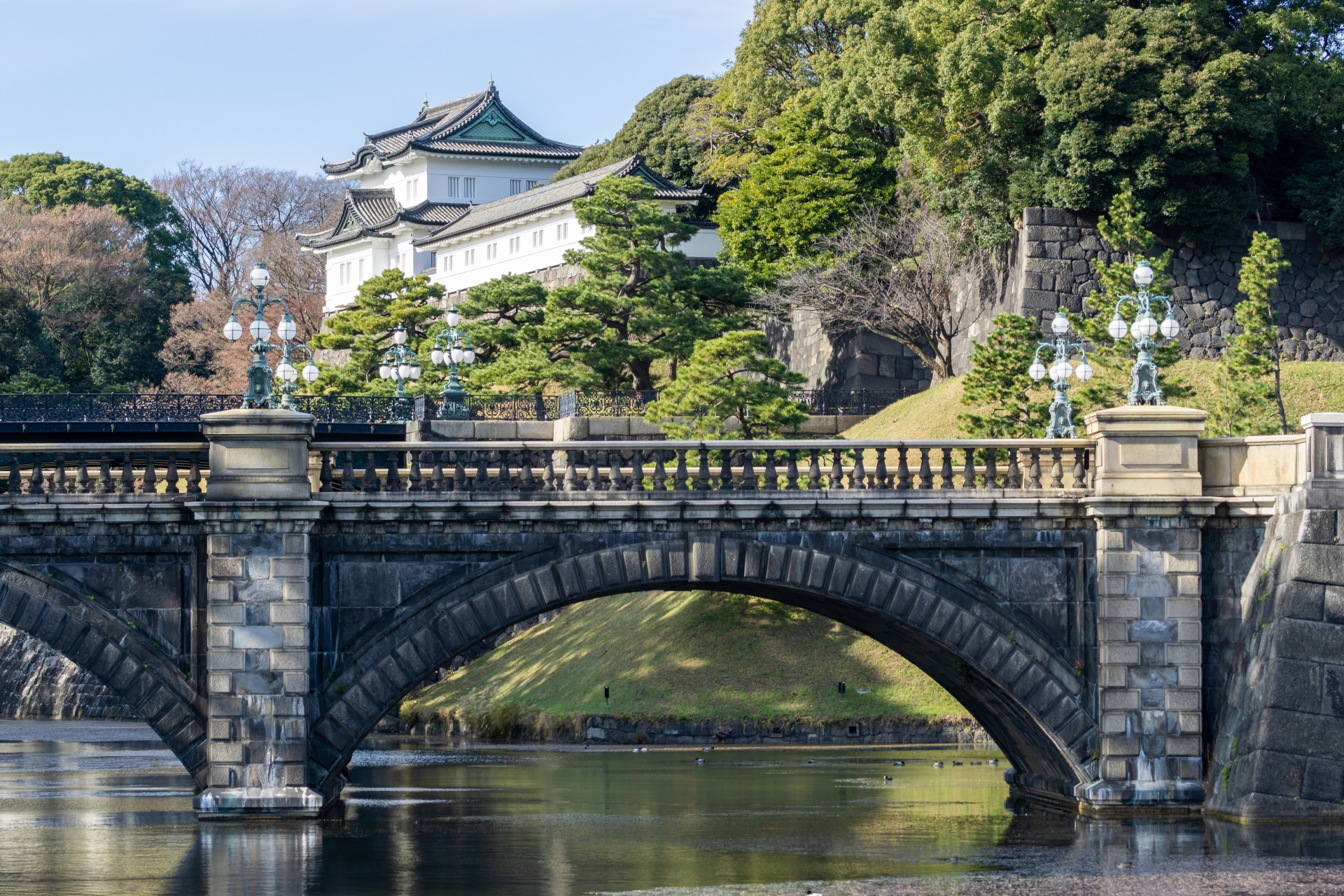
But, you do still get the chance to gawk at the luxurious abode, albeit from afar, as many of the palace’s gardens are open to the public, and free to enter and stroll about. You can even rent a boat and paddle around the castle’s moat.
Bare all
A great vacation really wouldn’t be a great vacation without stripping down and getting sweaty, naked, and sopping wet with a bunch of total strangers, right?
Well, luckily, Tokyo offers innumerable opportunities to do just that, with its wealth of sentos — which, no, aren’t seedy swinger clubs, but cheap, communal public bathing houses.

Back in the day, only Buddhist priests were permitted to get their soak on with a crowd of buck naked bathers, but nowadays, even the hoi polloi can get in on the act — with the exception of anybody who has tattoos though, as they’re banned from entering the majority of establishments.
The sentos are, not surprisingly, gender-segregated, and they operate a strict bathing suit ban policy, so put aside your inner prude for a hot minute and embrace the au naturel.
If you’re a newcomer to the world of naked communal bathing, then a good starting place to ease yourself in is Daikokuyu in Sumida Ward, a short walk away from Tokyo Skytree.
Added bonus? Daikokuyu regularly showcases local handicrafts to their cleansing clientele, so you get the opportunity to soak in some art, as well as the follicle-filled water, and enjoy some starkers shopping (although, we’d rather not know where you choose to keep your wallet.)
Ikuzo Daniel-san!

